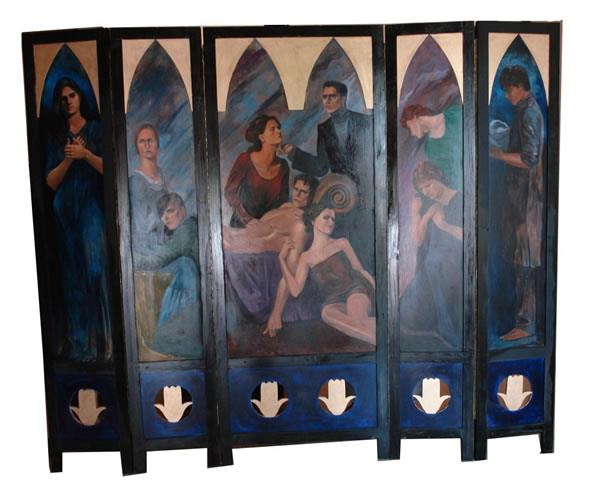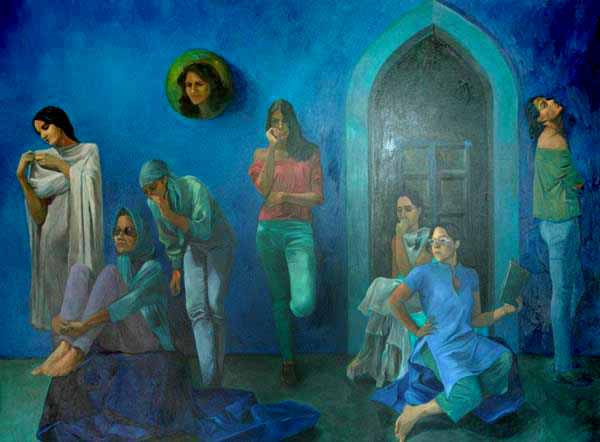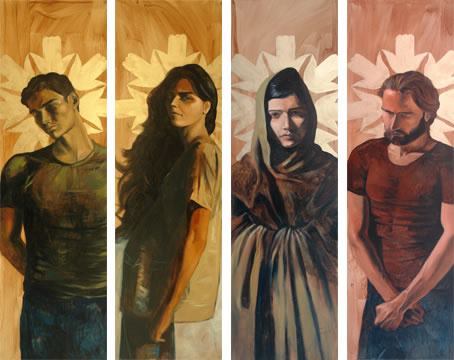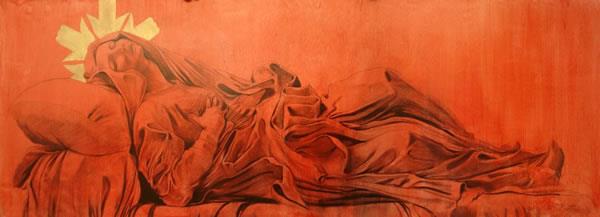Pray Tell Painting Exhibition at Canvas Art Gallery
KOMAIL AIJAZUDDIN’S ” PRAY TELL ” , A NEW SERIES OF PAINTINGS , STARTS AT CANVAS GALLERY ON JANUARY 22ND 2013 , FROM 5 PM – 8 PM.
WITH A MASTERS DEGREE IN PAINTING AND HISTORY OF ART , FROM THE PRESTIGIOUS PRATT INSTITUTE IN NEW YORK , KOMAIL DIVIDES HIS TIME BETWEEN NEW YORK AND LAHORE.
THE SHOW CONTINUES DAILY UNTIL JANUARY 31ST 2013 , FROM 11 AM – 8 PM (excluding Sunday)
The Canvas Gallery organised a ten-day painting exhibition entitled ‘Pray Tell,’ featuring nine large pieces created by Komail Aijazuddin, depicting different religious aspects of the country, inaugurated on Tuesday and will continue till January 31.
All nine paintings of Aijazuddin were painted proficiently. The artist used dark colours in the paintings, which depicted his artistic skills in using hard strokes.
One of his paintings titled ‘Wives,’ was about the group of Pakistani women, belonging to different segments of society. The artist said one of them was ‘post face-lift glam-rock aunty’, who owned a PR firm, the virgin who dresses in white lawn, the pouty princess, the literary reader, and the paranoid teenager.
Another work entitled ‘Friends’ was depicting that group of friends were sitting together talking on some issue, however, a few of them seemed aggressive. Aijazuddin created the paintings in an efficient manner, using beautiful colours to portray when he exactly pictured in his mind.
In a statement, he said that his work used the symbols and language of western religious art to illustrate ideas and stories from the Islamic canon. The more time I spent in Pakistan though, the less that made sense, he said, adding that instead his time in the country where satire was made redundant has shifted the focus of the work from didactic narratives (from the Karbala stories) to a more abstract portrayal of contemporary Pakistan, and the daily contradictions that make up their lives here.
The artist said, “Nine works in this show are each a reflection of that shift. Think of it as therapy. They range from large-scale history paintings to multi-panel wooden altarpieces, some to do with lamentation and loss, and others with accusation and intrigue.”
The wooden altarpieces play on that ambiguity, and are in essence altars to the Baroque. The hand of Fatima (a motif visitors will see throughout this body of work) is less a symbol of the events of Karbala and more reference to beleaguered, threatened minority of people, anywhere, he said, adding that the main impulse behind these altars, the decision behind every stroke in them, was the resoundingly unintelligible idea that secularism was a wholly elitist concern, a belief as short sighted as it is widespread.
Ayesha Tahir, a visitor at the gallery, said it was wonderful work that she witnessed today as every piece of art got attention of people. She said that ecstasy in Chaddar was the most inspiring work of Aijazuddin in her view.
She suggested people to visit the exhibition to witness the real artistic skills.
By Ahtesham Azhar
(DailyTimes)










